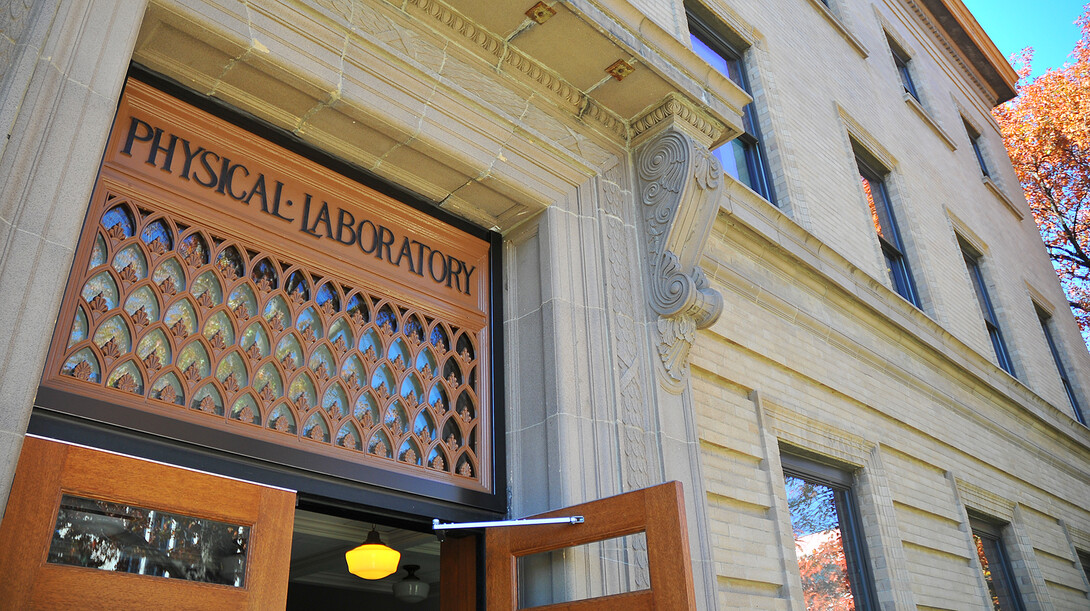
The renovation of Brace Hall has returned a forgotten piece of campus history to prominence.
When it opened in 1905, Brace Laboratory of Physics featured a variety of unique design elements, including a cast iron screen over its east door. That screen was counted among the architectural details lost to 109 years of general maintenance and upgrades.
“We knew the screen was a part of the building in 1905, but figured it had been removed with other terracotta and cast iron work,” said Dale Bowder, a project manager with Facilities Planning and Construction. “That changed when work began on the new entryway.”
There, under layers of plywood and insulation (probably added in reaction to the 1970s energy crisis, Bowder said) the slightly rusted cast iron screen was uncovered still in place over the door.
“It looked so cool we knew immediately that we had to do everything we could to reuse it,” Bowder said.
Carefully removed, the screen — which features simple scroll work and the words “Physical Laboratory” — was sent to Kaser Blasting and Coatings in Lincoln for refurbishment. The piece was blasted clean with glass beads, then powder coated with colors that closely match the original. It returned to its place over the east Brace Hall door the week of Oct. 27.
“We mounted it exactly where it was originally placed in the early 1900s,” said Chad Lea, lead project manager/designer for Facilities Planning and Construction. “It is a good symbol of what we tried to do in terms of updating Brace into a modern learning facility while maintaining the existing integrity and history of the building.”
Lea and Bowder said other materials in the building — primarily doors, doorframes and wood trim — were repurposed and incorporated into the renovation.
“We always try to reuse items when we refurbish buildings on campus,” Bowder said. “It’s an excellent way to operate because it helps preserve the historical significance of our buildings while also showing that sustainability is important to the university.”
The renovation of Brace Hall converted the 109-year-old building into a facility dedicated to using innovative teaching methods to further undergraduate education. The updated building, originally used for physics instruction, now possesses four life sciences laboratories and support space; a 186-seat auditorium; four classrooms dedicated to active and collaborative instruction; a Technology Transforming Teaching (T3) classroom where instructors can use and evaluate cutting-edge teaching technologies from furniture to advanced computerized devices; and office space that will allow Information Technology Services employees to provide classroom and learning support.








